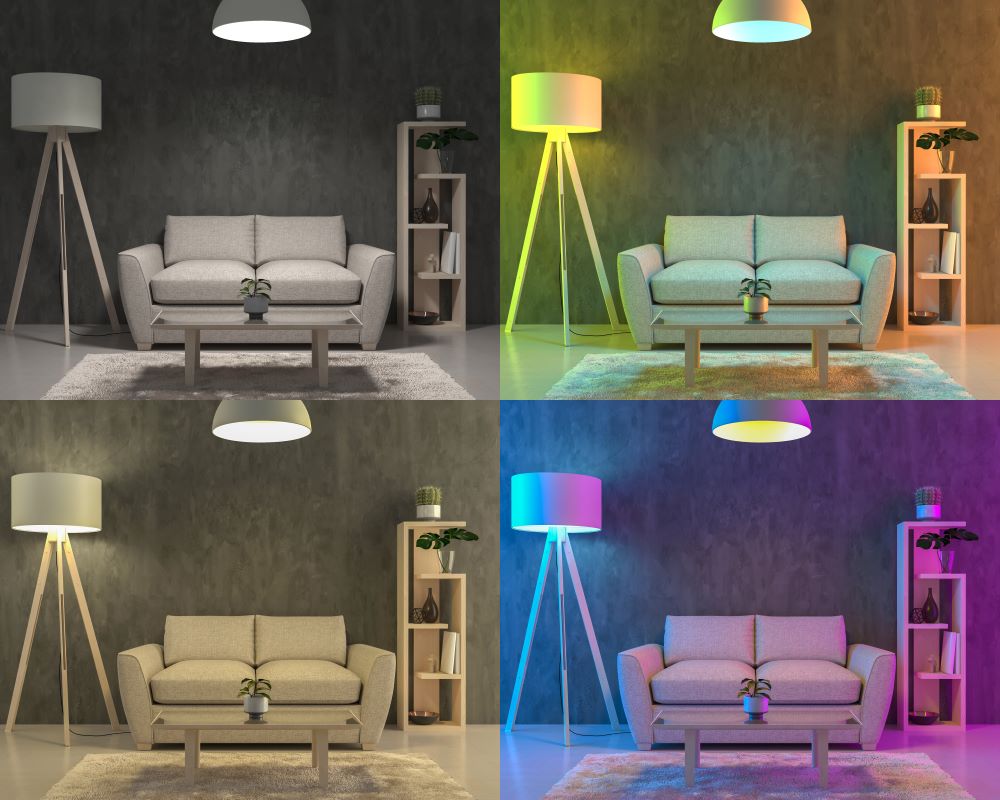When it comes to selecting LED lights, one important factor to consider is the Color Rendering Index (CRI) rating. CRI measures how accurately a light source reveals the true colors of objects compared to natural daylight. Understanding CRI ratings can help you choose LED lights that accurately represent colors and create the desired ambiance in your space. In this guide, we will explore CRI ratings, their significance, and how to interpret them when purchasing LED lights.
What is Color Rendering Index (CRI)?
Color Rendering Index, often abbreviated as CRI, is a metric used to measure how faithfully a light source renders colors compared to a reference light source, typically natural daylight. CRI ratings range from 0 to 100, with higher values indicating better color accuracy. A CRI rating of 100 means the light source accurately renders colors similar to daylight.
Importance of CRI Ratings
CRI ratings are important because they directly affect how colors appear under a specific light source. In settings such as retail stores, art galleries, or photography studios, accurate color representation is crucial. LED lights with higher CRI ratings can provide more accurate color rendering, ensuring that objects and spaces are seen as intended.
Interpreting CRI Ratings
a. CRI Rating of 80 and Above:
LED lights with a CRI rating of 80 or above are considered good and can accurately render most colors. They are suitable for most applications, including residential spaces, offices, and general lighting where color accuracy is important but not critical.
b. CRI Rating of 90 and Above:
LED lights with a CRI rating of 90 or higher are considered excellent. They provide exceptional color accuracy and are often used in applications where accurate color rendering is critical, such as art galleries, high-end retail, and photography studios.
Limitations of CRI
While CRI is a widely used metric, it has some limitations. CRI ratings are based on a standardized set of eight pastel colors, which may not represent the full spectrum of colors found in real-world scenarios. Moreover, CRI does not provide information about how different colors will appear under the light source.
Other Color Quality Metrics
In addition to CRI, there are other metrics that provide more detailed information about color accuracy. One such metric is the Television Lighting Consistency Index (TLCI), which is specifically designed for broadcast and film lighting applications. TLCI takes into account the spectral characteristics of the light source and provides a more accurate assessment of color rendering for television and film production.
Application-Specific Considerations
Consider the specific application and environment when choosing LED lights based on CRI ratings. In settings where accurate color rendering is essential, such as art studios or retail spaces, prioritize LED lights with higher CRI ratings. For general lighting purposes, a CRI rating of 80 or above should suffice.
Balancing CRI with Efficiency
It’s worth noting that LED lights with higher CRI ratings may have slightly lower energy efficiency compared to lights with lower CRI ratings. Consider striking a balance between color accuracy and energy efficiency based on your specific needs and priorities.
Understanding CRI ratings is essential when selecting LED lights for different applications. Higher CRI ratings indicate better color accuracy, which is particularly important in settings where accurate color representation is critical. Consider the specific requirements of your space and balance them with energy efficiency considerations to choose the appropriate LED lights with the desired CRI rating. By doing so, you can ensure that your lighting creates the desired atmosphere and accurately showcases the colors of your surroundings.
Color Rendering Index Ratings on LED Lights
Natural sunlight is a blend of different colors and wavelengths that combine to create white light. When that light strikes a colored surface, that surface absorbs all of those wavelengths except for the wavelengths that match the color on that surface which results in Color Rendering Index for LED Lights. Those wavelengths reflect back to a viewer who perceives the color accordingly. At the extremes, white objects reflect a majority of natural light and thus appear to be white, while dark objects absorb a majority of that light and appear to be black. Unlike natural sunlight, an artificial light source may not include all visible wavelengths of light, and the ability of that source to render all colors accurately, or at least as well as natural sunlight renders those colors, will be limited by the actual visible wavelengths comprising that light. How that artificial light source renders colors in relation to natural sunlight is the essence of the color rendering index (CRI) rating of that light source.
The CRI rating of an LED light source is generally more relevant than the CRI rating of an incandescent or fluorescent source because LED lights are more versatile and better able to be tuned to create specific light wavelengths that combine some or all components of visible light to render colors more accurately. CRI ratings for artificial light sources are measured on a scale from 0 to 100, with the top end of that scale equaling the full visible wavelength spectrum of natural sunlight. Thus, if you are selecting LED light bulbs for any commercial or residential application, those bulbs with CRI ratings that are closer to 100 will render colors more accurately and vividly. Most modern LED light bulbs and fixtures generate white light with CRI ratings of between 80 and 90, which creates a brighter room with lighting that is more akin to natural sunlight.
The CRI ratings of two different artificial light sources, however, cannot be compared without reference to the respective color temperatures of those sources. A light source’s color temperature is a relative measure of whether that light feels warm or cool. Light that includes a predominance of blue wavelengths can feel harsh and cold, whereas light sources with more yellow and orange wavelengths will feel warmer and more inviting. Color temperature is measured along a scale that is delineated in “Kelvin” units. Light with a CRI rating of 90 and a lower Kelvin temperature of 3000K to 400K will render objects with a warmer glow than a light source that has an identical CRI rating but with a harsher color temperature of 5500K.
LED light technology gives lighting designers a range of CRI and color temperature options that can be combined in different ways to generate unique lighting designs. Retailers who light their stores with LED’s now use this option to bring out specific colors in the products that they offer for sale and to make their store environments more inviting. Homeowners can also bend and shape LED lighting in their residences to emphasize colors or patterns in furnishings While the versatility of LED lighting has made this feasible, homeowners must also understand that they can no longer choose lights solely on the basis of a light bulb’s wattage ratings. In addition to the LED bulb’s lumen ratings (which indicates its relative brightness), the homeowner must also consider the bulb’s CRI and color rendering index in order to achieve an optimum lighting design in his or her home.






